Insights
Golf, Uninterrupted
Slowly but surely over time, housing and development has encroached on golf courses. One factor has been the result of natural economic and population growth, particularly as population centers expanded to previously rural areas. Another factor has been original plans to develop land in the first place.
Residential golf community development started in the U.S. in the 1950s and peaked in the 1980s; however, new developments continue today. Across residential golf communities, the golf course routes around housing and development. “Core” communities feature the golf course in the center of the property, whereas double-wide corridor (i.e. two holes share a space) and single-wide corridor (i.e. housing on both sides) is also very common. Residential golf communities are more common in the U.S. but are also present worldwide.
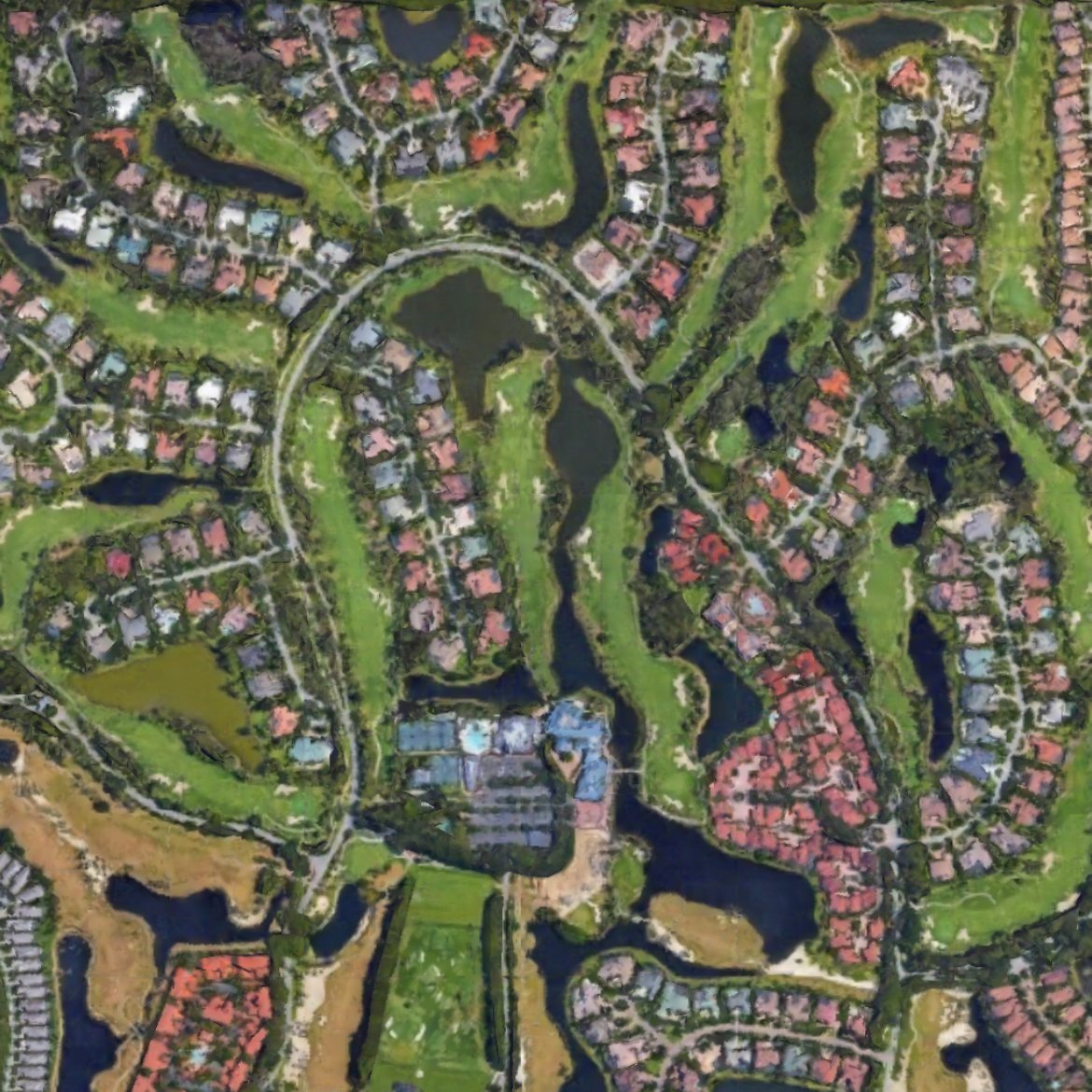
Above is an example of a residential golf community in the United States. Some holes have double-wide corridors (i.e. two holes share a space) but some have single-wide corridors (i.e. housing on both sides). Development is clearly part of the golfing experience at a non “Core” development like this.
At Open Links, we believe there’s value to the ability to disconnect with the busy world we live in and connect to nature, your company and the game. As a result, we’ve created our Housing Index filter to categorize the extent to which development intermingles with the golf course. Our Very Low category identifies courses where there is nothing on the horizon but the course and the surrounding natural environment, similar to many of the first courses ever built amongst the coastal dunes in Great Britain and Ireland. We will highlight the Very Low category of courses in the remainder of this article.
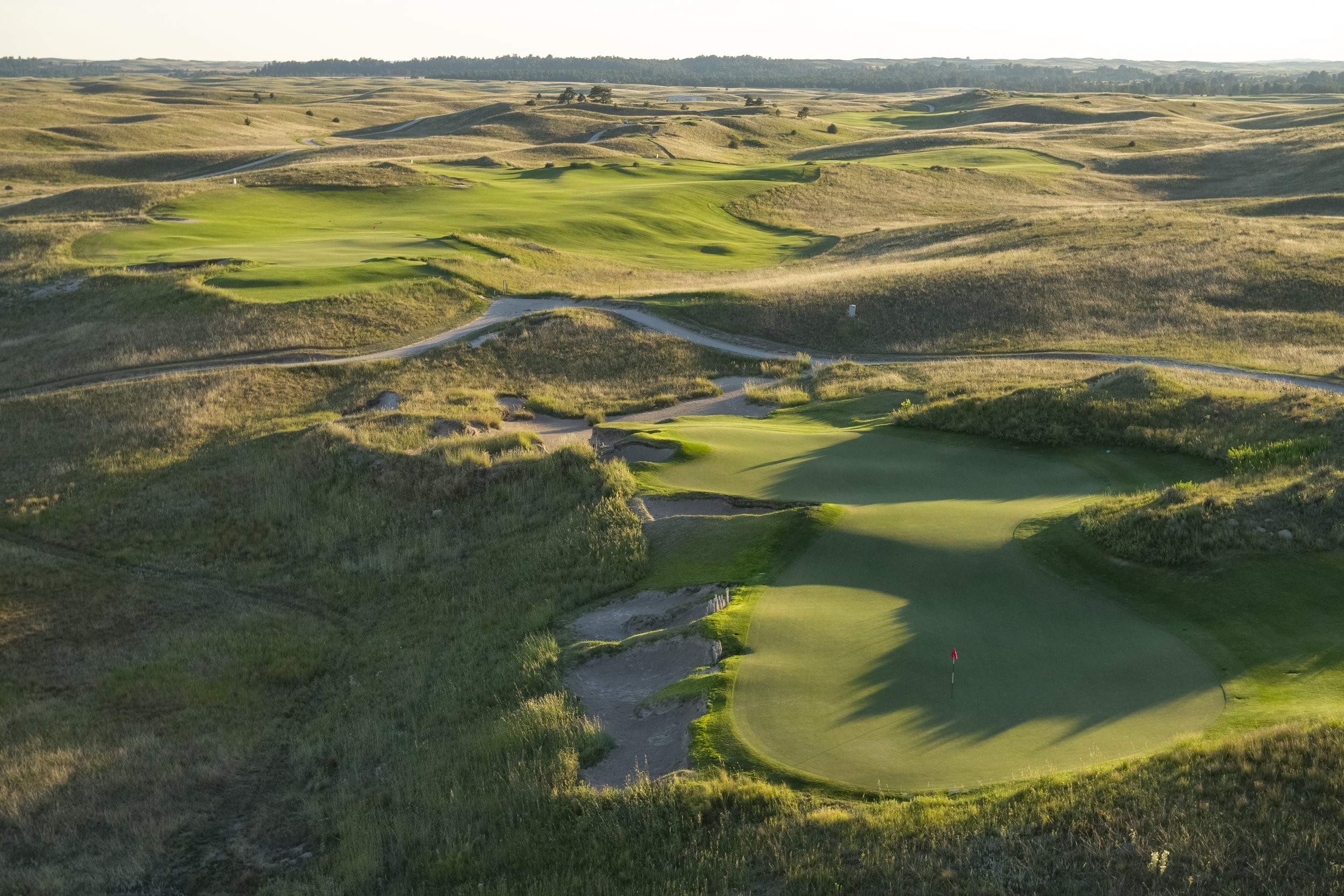
The Dunes course at Prairie Club in Nebraska is an example of a course with a Very Low Housing Index rating. There is no development surrounding or intersecting the golf course. It’s a “pure golf” experience, so to speak. Photo: Jeffrey Bertch (Links & Landscape)
Across the 6,330 global courses that are currently live on our website, 851 (or 13.4%), have a Very Low Housing Index. Of countries that have at least 30 courses in the Open Links database, Ireland (32.2%) and Scotland (31.6%) have the highest percentage of courses with no surrounding development. The U.S. has one of the lowest, at 12.1%. Of regions that have at least 30 courses in the Open Links database, the Midlands in England has the highest percentage of courses with no surrounding development (52%), followed by Nebraska and Northeast Colorado (45.8%).
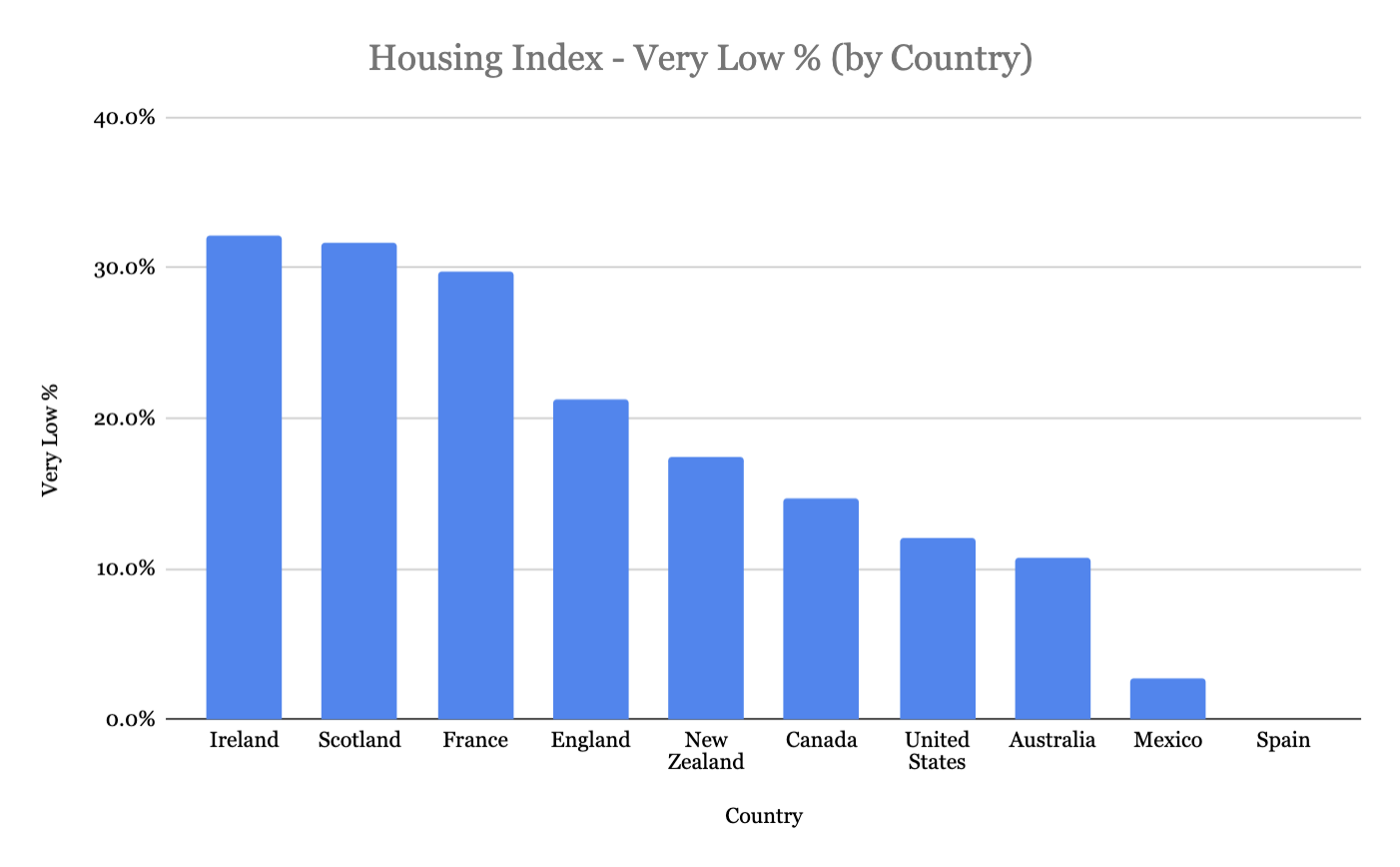
1 of 3 courses in Ireland have no housing or development intersecting the golf course or on the surrounds of the golf course
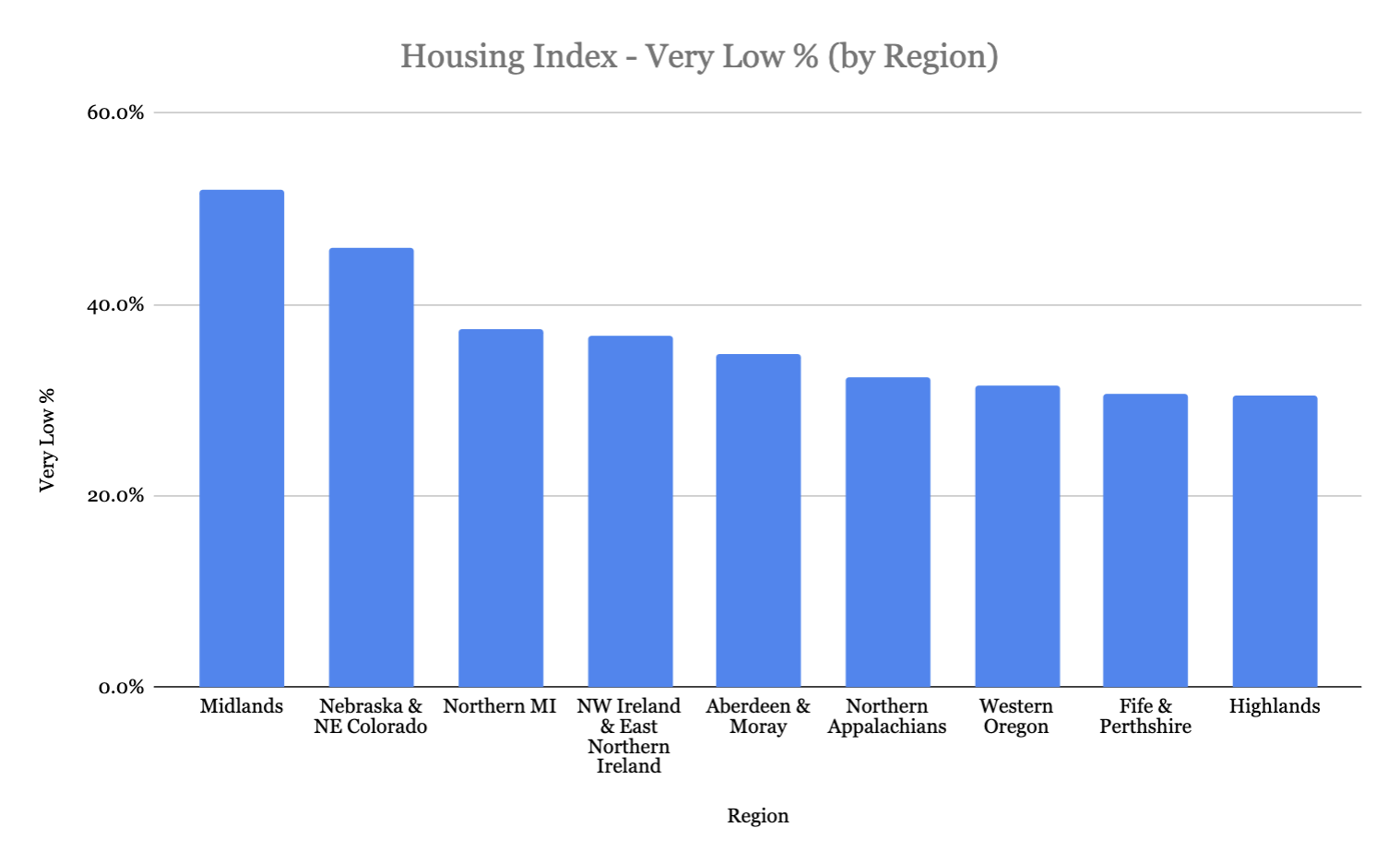 If you are a fan of an uninterrupted golfing experience, there is good news for you. Since residential golf community development peaked in the 1980s, new course builds that have a Very Low Housing index have been on the rise. Bandon Dunes likely has had something to do with this trend. They showed that destination golf can be both something golfers desire and profitable. Since Bandon opened its doors in 1999, 137 resort courses have been built around the world with a Very Low Housing Index. Examples include Prairie Club (U.S.), Ardfin (Scotland), Barnbougle Dunes (Australia), and Cabot Cape Breton (Canada). Mike Keiser, the founder of Bandon Dunes in Oregon, drew inspiration for destination golf from Royal Dornoch in Scotland, which is open to the public, and Sand Hills in Nebraska, which is private. Other private clubs that have opened since 2000 with a Very Low index include Ohoopee Match Club (U.S.), Coppinwood (Canada), and Tara Iti (New Zealand). Bandon’s tagline is “Golf as it was meant to be” – we hope that these trends continue and, where possible, more courses will be like the original ones built in Scotland where golf is at the center of the experience.
If you are a fan of an uninterrupted golfing experience, there is good news for you. Since residential golf community development peaked in the 1980s, new course builds that have a Very Low Housing index have been on the rise. Bandon Dunes likely has had something to do with this trend. They showed that destination golf can be both something golfers desire and profitable. Since Bandon opened its doors in 1999, 137 resort courses have been built around the world with a Very Low Housing Index. Examples include Prairie Club (U.S.), Ardfin (Scotland), Barnbougle Dunes (Australia), and Cabot Cape Breton (Canada). Mike Keiser, the founder of Bandon Dunes in Oregon, drew inspiration for destination golf from Royal Dornoch in Scotland, which is open to the public, and Sand Hills in Nebraska, which is private. Other private clubs that have opened since 2000 with a Very Low index include Ohoopee Match Club (U.S.), Coppinwood (Canada), and Tara Iti (New Zealand). Bandon’s tagline is “Golf as it was meant to be” – we hope that these trends continue and, where possible, more courses will be like the original ones built in Scotland where golf is at the center of the experience.
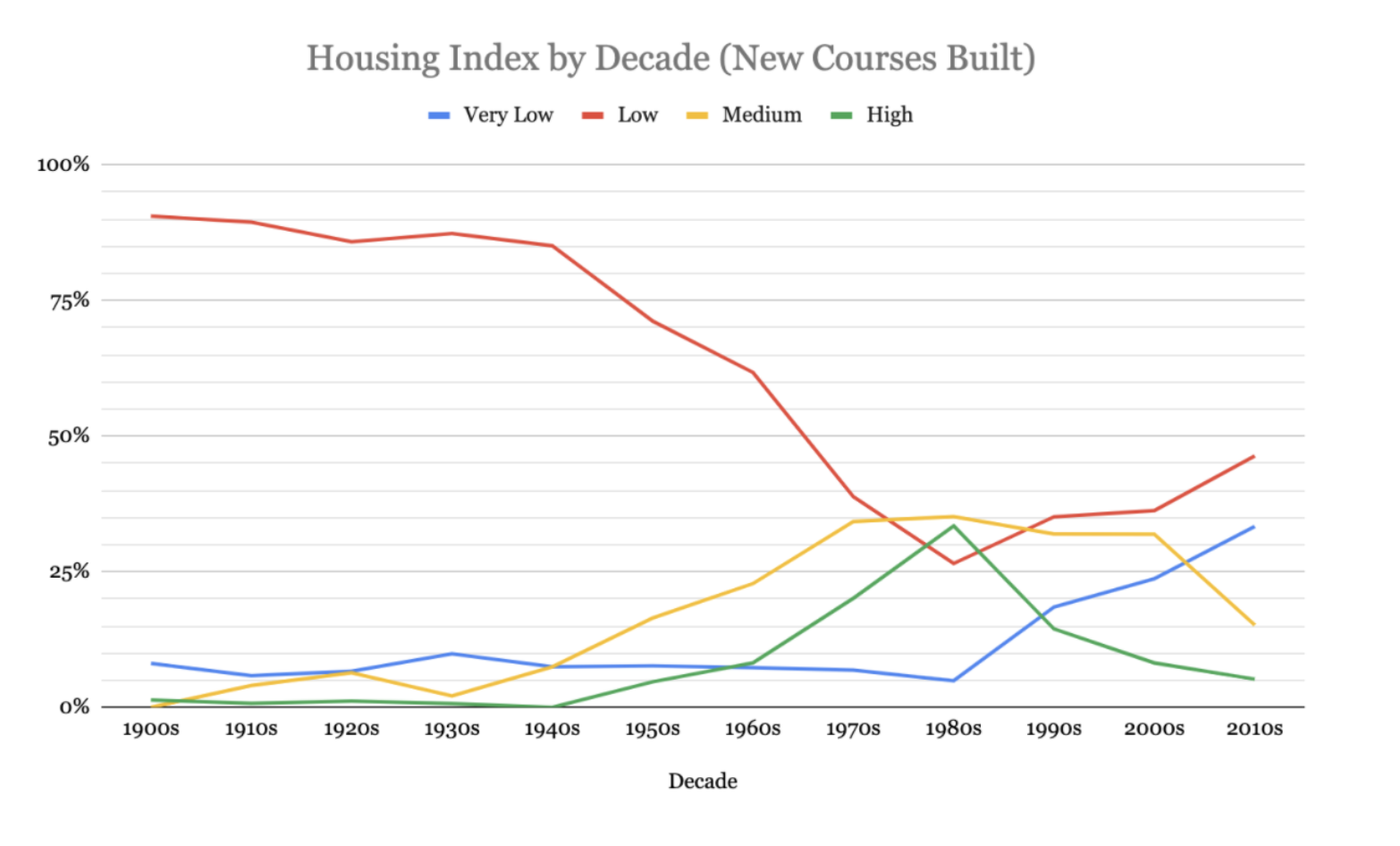
Courses with no development intersecting the course (i.e. Very Low and Low Housing Index) were very common in the early era of U.S. golf course development and are making a comeback.
